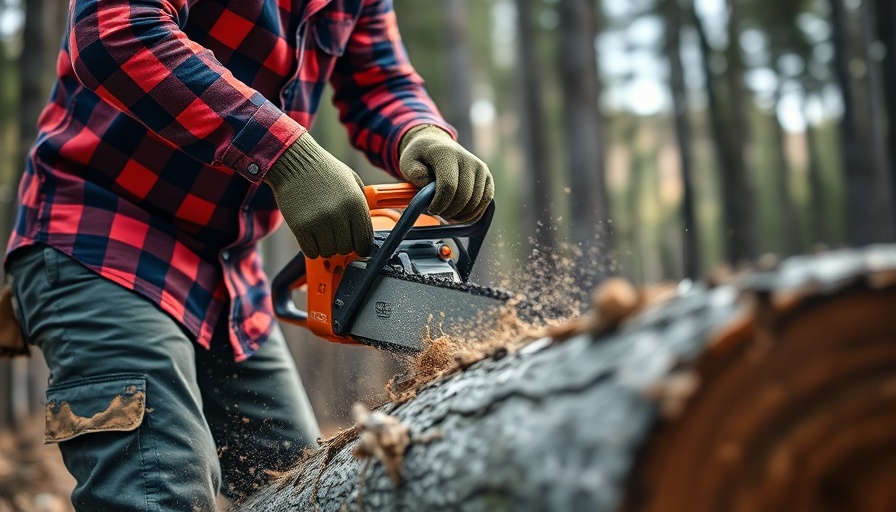
Understanding Chainsaw Safety: A Must for Every User
Chainsaws are powerful tools that make yard work and woodworking easier, but without the proper precautions, they can also be incredibly dangerous. As more people take on DIY projects at home, understanding chainsaw safety is crucial. From knowing when to sharpen your chain to wearing the right protective gear, these guidelines can help minimize risk while maximizing efficiency.
Preventing Kickback: The Silent Threat
One of the most dangerous aspects of using a chainsaw is the kickback phenomenon, where the chain’s top bar makes contact with a surface and causes the saw to lurch back towards the user. Avoiding the kickback zone—located at the tip of the bar—is essential. Learning the right cutting techniques, such as holding a firm grip with the thumb around the front handle, is crucial for maintaining control.
The Importance of Keeping Your Chain Sharp
A sharp chain is not just about making clean cuts; it’s a matter of safety. When the chain is dull, it requires more force to cut, increasing the risk of losing control. Signs that indicate your chain requires sharpening include difficulty pushing through cuts and seeing dust instead of chips flying. Regular maintenance is key to ensuring your chainsaw remains safe and effective.
Industry Insights: The Evolving Standards of Chainsaw Safety
As chainsaws become more commonly used in home projects, manufacturers are innovating in safety features. Modern saws come equipped with chain brakes that stop the chain rapidly during a kickback incident. Understanding these advancements can empower users to make informed choices, enhancing their personal safety.
Protecting Yourself: Essential Safety Gear
Always equip yourself with the right protective gear before starting any cutting task. Wearing protective chaps can significantly reduce the risk of severe injuries, and a helmet combined with face screens and ear protection can safeguard your head, eyes, and hearing from both flying debris and noise pollution. Opt for steel-toed boots to protect your feet, especially on uneven terrain or when moving logs around.
Common Myths About Chainsaw Use
There are many misconceptions surrounding chainsaw operation, from the belief that anyone can use one without training to the notion that protective gear is optional. Dispelling these myths is crucial for promoting responsible use. Chainsaws require skill and respect—they’re not simply tools to pick up and start using without preparation.
Engaging with the Community: Share Your Experiences
Engage with local DIY communities or forums where you can share your insights or learn from others’ experiences with chainsaw safety. Hearing real-world experiences can provide new perspectives and inspire better handling practices while using power tools.
In summary, understanding and implementing proper chainsaw safety is essential for anyone looking to use this versatile tool. By following effective safety measures, like avoiding the kickback zone, keeping your chain sharp, and using the right protective gear, you not only protect yourself but also enhance your overall experience with chainsaws. Embrace safety, and let your projects flourish!
 Add Row
Add Row  Add Element
Add Element 


 Add Row
Add Row  Add
Add 

Write A Comment